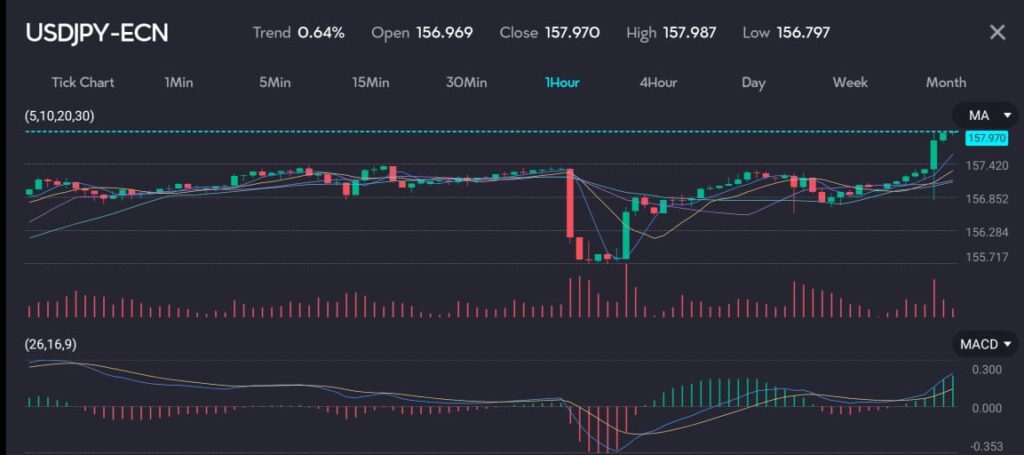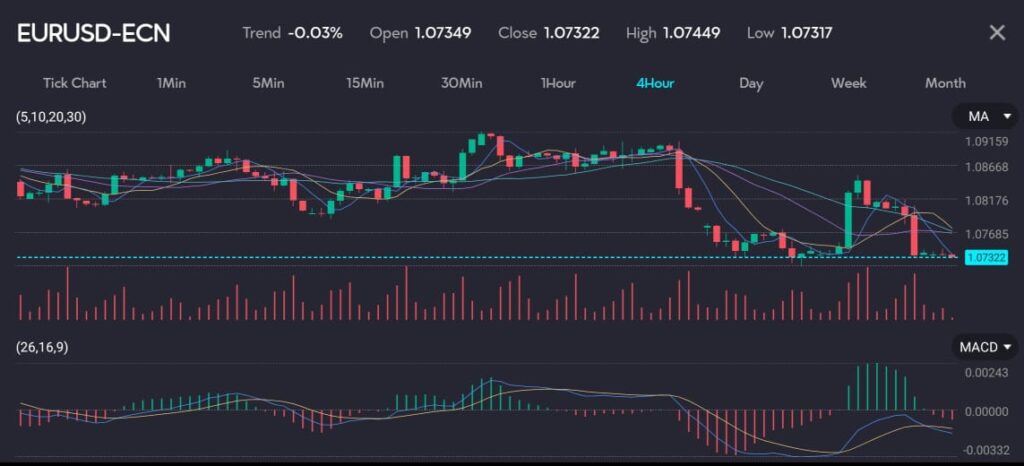Key points:
- Yen shows minor weakness ahead of the BOJ policy decision.
- Euro faces weekly decline amid political turmoil in France.
On Friday, the yen was on the defensive as traders awaited the Bank of Japan’s policy decision, while the euro was headed for a weekly loss due to political turmoil in France. The dollar gained strength against both currencies, buoyed by safe-haven bids and eurozone political uncertainties.
Yen anticipates BOJ decision

Picture: Japanese yen trading at 157.970 on the VT Markets app.
The yen weakened slightly to 157.08 per dollar, eyeing a marginal weekly loss of 0.2%. The Bank of Japan (BOJ) is expected to maintain its ultra-low interest rates but might announce a reduction in its massive bond purchases, signaling a gradual shift from quantitative easing.
If the BOJ decides to announce no changes, the yen might weaken further. However, if they do announce a tapering, the yen’s scope for strengthening remains limited.
Dollar strengthens amid political uncertainty in Europe

Picture: Euro on decline as seen on the VT Markets app.
The dollar gained ground against major currencies, with the euro slipping to $1.0737, set for a 0.6% weekly loss. Political turmoil in France, sparked by President Emmanuel Macron’s call for a snap parliamentary election, has spooked investors, adding to the euro’s woes.
Against the British pound, the euro was near a 22-month low, facing a weekly decline of 0.9%. Similarly, the euro held near its weakest levels in over five months against the Australian dollar and in six months against the New Zealand dollar.
Uncertainty surrounds Macron’s political Future and France’s debt sustainability
Although Macron’s announcement came as a surprise, there is a possibility that new elections could work in his favour.
However, the likelihood of this scenario is quite low. It is more probable that Macron’s political standing will diminish, raising concerns about France’s debt sustainability.
In the broader market, sterling edged 0.08% lower to $1.2752 but was set for a 0.3% weekly gain. The Australian dollar was off 0.18% at $0.6625, while the New Zealand dollar eased 0.26% to $0.6152.
However, both currencies were on track to rise 0.8% and 1% for the week, respectively, driven by expectations of higher rates for longer and weaker U.S. economic data.
Data showed U.S. unemployment claims rose to a 10-month high, and producer prices unexpectedly fell in May, reinforcing bets that the Federal Reserve might start easing its policy in September.
Despite the Fed’s hawkish tone at its recent meeting, markets focused on the softer data, boosting Wall Street to record highs and lowering Treasury yields.
Also read: Strong nonfarm payrolls report throws rate cut timeline of the Federal Reserve into question
The Federal Reserve’s frequent revisions to its policy path reflect its data-dependent approach. Incoming inflation surprises will likely continue to cause large revisions to the policy outlook.
Start trading now — click here to create your live VT Markets account.









